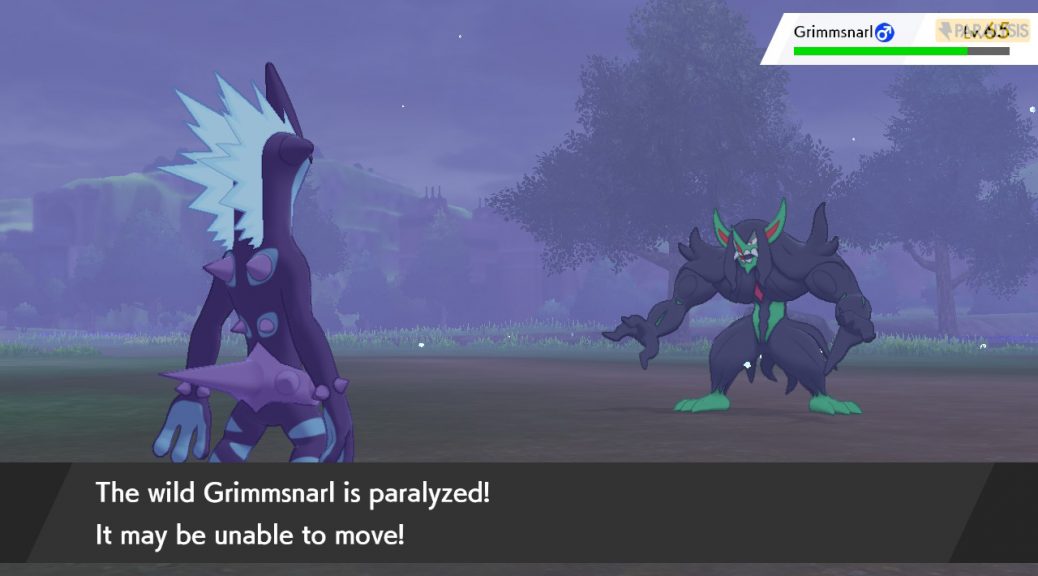Competitive Concepts: Status Conditions
Learn how status conditions influence competitive metagames and the best methods of countering them.
Status conditions have been around since the very beginning of the Pokémon franchise and have always had a big role to play in competitive metagames. These ailments are many and varied, with more and more being added over the various generations. Status conditions are potent weapons in a player’s arsenal, they don’t always inflict damage but will almost always leave your opponent more vulnerable. The chances are though, that you may not even have recognised some of the more obscure conditions for what they are in the past.
Non-Volatile Status Conditions
These are the core conditions that every Pokémon player is familiar with: Poison, Sleep, Paralysis, Burn and Freeze. These conditions are termed non-volatile not because they don’t harm your opponent, they are by-and-large the most severe conditions, but because they are permanent, unless removed through a move like Heal Bell, and remain even after you switch out. Non-volatile conditions cannot be stacked with each other.
Poison
Arguably the most common status condition you will come across in competitive battling is Poison. This is a nasty condition that leaves Pokémon much more vulnerable to being taken out by a strong move or revenge killed. A Poisoned Pokémon loses 1/8th of their maximum Hit Points at the end of each turn. What makes Poison particularly potent, however, is that unlike the other conditions, there is a more advanced variant called Badly Poisoned. Unlike the regular condition, a Badly Poisoned Pokémon actually starts off losing less HP, starting with losing 1/16th of their max HP. This condition is worse because this damage output increases each turn that a Pokémon stays in going from 1/16th on the first turn, 2/16th on the second, 3/16th on the third and so on and so forth. This forces a player to switch more frequently otherwise they will eventually be taking enormous amounts of damage. These stacking increments also make it harder to simply heal off the damage sustained from the condition.
In the previous Competitive Concepts, it was stated that there is an argument for calling Poison the most debilitating status condition. This is not strictly true in a 1v1 scenario. What makes Poison so debilitating though, is the damage it can inflict on a team. Poison is easily the easiest condition to spread. Even outside the Poison type itself, the ability to inflict this condition is very common. Almost every Pokémon in the game has the ability to use the move Toxic which immediately inflicts Bad Poisoning on a target it hits with 90% accuracy. Additionally, Poison coverage moves that potentially spread the condition such as Sludge Bomb or Poison Jab are not uncommon. There is also, as previously covered, Toxic Spikes, an Entry Hazard which will spread varying degrees of Poison to any Pokémon switching in depending on how many Toxic Spikes stacks are up. With the condition being this easy to spread, it is very easy to find most of your team’s longevity compromised, weakening your team as a whole a great deal.
Because of how common Poison is, it is absolutely essential to prepare for it when building a competitive team. This means including Pokémon that cannot usually be affected by the condition and/or reliable means of removing it from your team. Thankfully, there is a decently high number of Pokémon who are immune to being Poisoned. Poison and Steel types are both immune to being Poisoned by a Pokémon that does not have the Corrosion ability. Additionally, Pokémon with the Immunity Ability also cannot suffer the condition. Pokémon with Magic Guard or Poison Heal can still be afflicted by the condition, but will not suffer for it. Pokémon with the latter condition will actually recover HP instead of losing it. There are also further abilities that protect allies from Poison in a doubles environment.
A supportive “cleric” Pokémon, such as Alcremie, with access to Heal Bell or Aromatherapy is able to remove Poison (or any other non-volatile condition) from themselves and their teammates. However, relying solely on this method of counterplay is risky as losing your cleric Pokémon then leaves your team vulnerable again. This means that even on a team with access to Heal Bell or Aromatherapy, it’s still a good idea to have some Pokémon with a total immunity.
Sleep
Sleep is an extremely frustrating status condition that renders the opposing Pokémon completely unable to retaliate under most circumstances. A Pokémon afflicted with Sleep is essentially powerless for a randomly selected time period of 1-3 turns (thankfully, a much shorter time than in previous generations). There are not many moves or Abilities that can subject a Pokémon to this condition and the vast majority of them have very low accuracy. Furthermore, in most Smogon tiers, there is a Sleep Clause in effect that limits the game to only one Pokémon on each side being affected by Sleep. For these reasons, inflicting Sleep is generally not a great strategy.
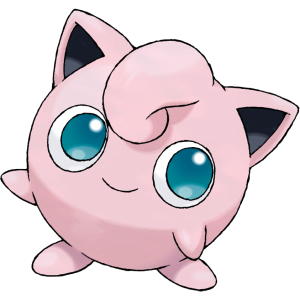
That being said, there are two moves that will always inflict Sleep that also have 100% accuracy. The first is Yawn, which has a delay in place causing the targeted Pokémon to fall asleep the turn after being hit. This is not a particularly good strategy either usually as it still leaves a turn available to deal damage before forcing a switch to prevent the Sleep taking effect. The second move, however, is an extremely rare move called Spore. Unlike Yawn, Spore does not have a time delay and can be immediately crippling.
Unlike other conditions, Sleep is extremely difficult to counter so it is very lucky that it is so hard to put to use. In the cases of Spore and Sleep Powder, Grass types are immune to both moves as they are considered Powder Moves. Similarly, Pokémon with the Sound Proof ability cannot be put to sleep by Sing, Grass Whistle or Relic Song. Pokémon with the Abilities Insomnia or Vital Spirit are completely immune to any form of Sleep. There are also the Abilities Early Bird which causes an earlier wake up and Komala’s Ability Comatose which causes it to always be considered Asleep, but allows it to battle regardless. The moves Snore and Sleep Talk can still be used by a Sleeping Pokémon.
When teambuilding, it is generally not particularly important to consider Sleep itself as a threat. It is very rarely employed and unreliable and any secondary methods of counterplay against status conditions in general such as clerical moves or Magic Bounce should be enough to cover it on the rare occasions it does see use. Keep in mind though, it’s a good idea to pay attention to the meta you play in for the occasions that Spore becomes popular so you can be prepared with a Grass type or a Pokémon immune to Sleep.
Paralysis
Although not nearly as common as Poison, Paralysis is not at all uncommon and can be particularly troublesome to hyper-offence teams. A Pokémon that is Paralysed has its Speed stat reduced to 50% of its original value. Furthermore, there is a potentially irritating secondary effect of Paralysis causing a 25% chance for a Pokémon to be unable to use a move on any given turn.
In reality, as annoying as that secondary effect is, it is not particularly important. 25% is not that high of a rate all things considered and ultimately it is the half cut to a Pokémon’s Speed that is usually vastly more worrisome. The Speed drop may not be particularly problematic to a slow, bulky Pokémon but to fragile sweepers, it is absolutely crippling. Paralysed sweepers are dead weight waiting to be picked off by the Pokémon they can no longer outspeed. This makes Paralysis an ideal weapon against Choice Scarf sweepers in particular as it reduces their Speed back to its original value but does not free them of being locked into a single move.
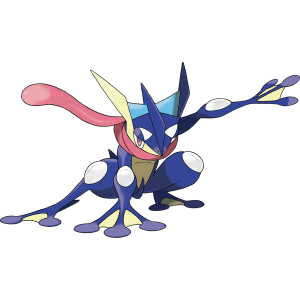
Paralysis is much less easy to spread than Poison, but is far from being as rare or unreliable as Sleep. Paralysis is primarily caused by Electric type moves, in particular by the 90% accuracy Thunder Wave which is quite widely spread even among non-Electric types. Common Electric coverage moves such as Thunderbolt and Thunder also carry a chance to inflict the condition. While Paralysis is primarily caused by Electric type moves, it is important to keep in mind that inflicting Paralysis is not exclusive to Electric Pokémon and to be ready for it. There are even a few non-electric moves such as Body Slam and Tri Attack that can cause the condition. One of the most prominent users of Paralysis is Ferrothorn, a Grass/Steel type.
Teambuilding with Paralysis in mind is not particularly difficult. Ground types are immune to the vast majority of Paralysing moves and Electric types are immune to the condition completely. Viable Pokémon of these types, especially of the Ground type, are not particularly hard to come by. Additionally, Pokémon with abilities like Limber are immune to Paralysis and status healing abilities like Natural Cure or Hydration can also be used. A stop-gap measure of dealing with Paralysis is to switch in a slow, bulky Pokémon against a likely Paralysis abuser, but it is recommended to have a more reliable method of dealing with it.
Burn
This status condition, after Poison and Paralysis, is the third of the commonly inflicted non-volatile status conditions. The Burn condition shares similarities to both of these other conditions. Like Poison, it has a HP draining effect. A Burned Pokémon will lose 1/16th of their maximum HP at the end of each turn. Like Paralysis, Burn also has a stat-lowering effect. The Attack stat of a Burned Pokémon is not technically reduced, but the affect is similar as Physical moves have their damage output halved. The health reduction here is negligible and can be all but ignored by Pokémon with high HP or Recovery moves. However, the secondary effect of a Burn is extremely harmful to Pokémon that rely on their Physical attack to do damage and it is against those attackers that a Burn is most effective.
Much like how most moves inflicting Paralysis are Electric moves, most moves that inflict Burn are of the Fire type. Most Fire type moves carry a chance of Burning the target, although this chance is usually a negligible 10%. The most reliable moves for spreading this condition are Will-o-Wisp which has a guaranteed Burn effect with 85% accuracy, Lava Plume which has an additional 30% Burn chance and the Water move, Scald, which also has a 30% chance of causing a Burn. The Flame Body Ability can also spread Burns. The number of Pokémon that can reliably spread Burns is quite a bit more restricted than those who cause Poison or Paralysis, although it is still far more common that Sleep or Freeze.
When considering how to counterplay against Burn, there are a few options available. First and foremost, Fire type Pokémon are immune to any kind of burning and, while susceptible to burns, Water types are a strong deterrent against many of the Pokémon who might inflict this condition. The Abilities Water Veil, Water Bubble and Comatose also prevent Burning. The ability Magic Guard prevents taking damage from being Burned, but does not mitigate the secondary effect. The Guts ability is the opposite, cancelling out the damage reduction but not the damage. Heatproof does not cancel out either effect of Burning, but does further halve the damage inflicted. Rather ironically, Water-typed Scald is actually the hardest Burn-inflicting move to counter. This is because Fire types cannot switch into it safely because of their Water weakness. A stop-gap measure against a Pokémon that can Burn you is to switch in a bulky Special Attacking Pokémon who has little to fear from the condition. Be wary though, if you cannot heal up the HP lost to a Burn, it can eventually stack up enough to cause problems and at the very least will cancel out items like Leftovers or Black Sludge.
Freeze
While Poison has an argument for being the most problematic status condition from a team-wide perspective, when it comes to single match-ups, there is strong competition from Freezing. A Frozen Pokémon cannot use moves at all (with few exceptions). Furthermore, unlike with Sleep, there is no set duration for how long a Pokémon can remain Frozen with only a 20% chance of thawing each turn. A Frozen Pokémon is almost always, unequivocally, dead weight and fodder.
Blessedly, Freezing is extremely unreliable a strategy and extremely hard to actually inflict on an enemy. There are extremely few moves that can inflict this condition, all but two of them being Ice moves and none of them being reliable at Freezing. In fact, every Freezing move only has a 10% or less chance to Freeze the target with the exception of Secret Power which has a 30% chance, but only has this chance at all when used in a snowy or icy environment – environments that only exist in-game making it a non-factor from a competitive point of view. Freezing is so unlikely that the best Freeze-inducing moves – Ice Beam and Blizzard are a lot more useful for their high damage output and wide type coverage than for their ability to Freeze.
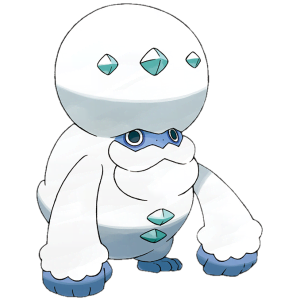
Because the chance of you actually being Frozen in a battle is extraordinarily low, there is absolutely no need to really consider counterplay for Freezing when building a competitive team. Even if your opponent does get lucky enough to score a Freeze, they will almost never succeed in doing it twice. That being said, it may be handy to know that Ice type Pokémon are totally invulnerable to being Frozen, there are also several moves, such as the extremely common Scald, that unfreeze the user when being used. The Abilities Magma Armour or Comatose also make the holder immune to Freezing and a Pokémon cannot be Frozen during Harsh Sunlight. All generic status removing moves like Heal Bell or Aromatherapy will also, naturally, also remove this condition.
Volatile Status Conditions
Volatile status conditions are those that disappear from a Pokémon when it switches out such as Confusion or Infatuation. Unlike the non-volatile conditions, these can be stacked on top of other status conditions (volatile or otherwise). Also unlike the non-volatile conditions, there is a vast number of these, although many may not recognise them as status conditions at all. Most of these conditions do not have any particularly huge relevance or impact in competitive metagames, but there are a few that warrant mentioning here.
Taunt
Taunt is without a doubt one of the most useful Status moves in the game as it is the only move that can inflict the taunted condition. A Pokémon that is taunted is unable to use any move that does not directly inflict damage for the next three turns after the condition is applied, even Status moves that indirectly cause damage such as Toxic or Leech Seed, or that always turn into a damaging move, like Nature Power, cannot be used.
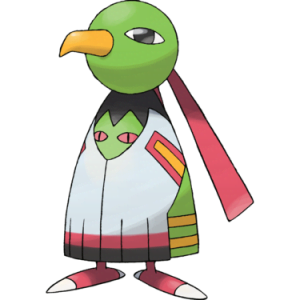
This means that a taunted Pokémon is unable to buff their stats, lower yours, recover with most reliable healing moves or reliably inflict status conditions on your team. A taunted Pokémon can’t even use Taunt on you back. This condition is absolutely devastating to deal with for setup sweepers who rely on boosting moves to sweep and for stall teams that rely heavily on Status moves.
It is extremely important to be wary of Taunt for most teams, but reliable counterplay is somewhat rare. Pokémon with the Abilities Oblivious, Magic Bounce or Aroma Veil cannot be taunted. Additionally, Pokémon with the latter Ability also protect their Allies in a Double Battle meta. The Mental Herb held item is a one-time cure for being taunted and there is also the option to simply use Taunt yourself. Alternatively, you can also switch in a choice locked Pokémon who doesn’t need to worry about using Status moves to begin with.
Leech Seed

The Leech Seed condition, or “being seeded”, is caused by its namesake move. A Pokémon afflicted with Leech Seed will lose 1/8th of their HP each turn, while the opposing Pokémon will regain that same amount. Leech Seed is not a particular common condition to deal with as the move is exclusively learned by Grass types, of which few are overly viable in their metas. However, most of the Grass types that are viable, including the extremely good Ferrothorn, are capable of learning this move. Leech Seed is particularly unpleasant to deal with when combined with Poison or Burn.
Counterplay against being seeded is simple enough. All Grass type Pokémon are immune to Leech Seed. The move can also be reflected by Magic Bounce or rendered unusable by a well-predicted Taunt. If all else fails, as a non-volatile condition it will also disappear if you switch out.
Bound and Can’t Escape
These two highly similar conditions make up the brunt of a much maligned strategy known as trapping. Trapping is the term for preventing an opposing Pokémon from switching out of the battle by ordinary means. The Bound condition is triggered by moves such as Magma Storm or Sand Tomb and lasts for 4-5 turns. During those turns, not only is it impossible to switch out, the victim also loses 1/8th of their max HP each turn. The Can’t Escape condition is in much the same mould. However, there is neither a time constraint nor additional damage caused by the effect.
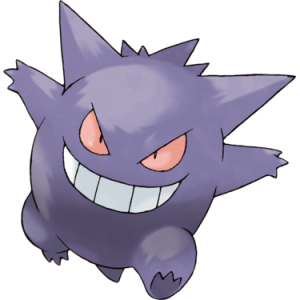
Trapping is a notorious strategy, the idea being to force a Pokémon that can’t defend against you to stay in and get taken out. It was this strategy that caused Smogon to ban Abilities like Arena Trap and Shadow Tag in most of its tiers. It is possible to defend against these conditions when they come from moves, however. Firstly, Ghost type Pokémon are immune to any sort of trapping and can still switch out as they please. Items such as the Smoke Ball and Shed Shell can also protect a Pokémon from being trapped. In the case of the Bound condition, it is possible to remove the condition through the use of Rapid Spin. Rapid Spin will not work on the Can’t Escape condition, but this can be escaped with the common U-Turn or Volt Switch. More generalised counterplay options such as Magic Bounce and Taunt can also be useful in dealing with trapping Status moves.
Conclusion
A lot of in-game players don’t think about status conditions much beyond finding them bothersome when they pop up. From a competitive perspective however, status conditions are a game defining and changing element that can play a very significant role in weakening your opponent’s team. As such, it is very important to familiarise yourself with the many status conditions so you can both play around them when you need to and effectively use them yourself.
Edited by Aldo, bobandbill and Siddhar.
